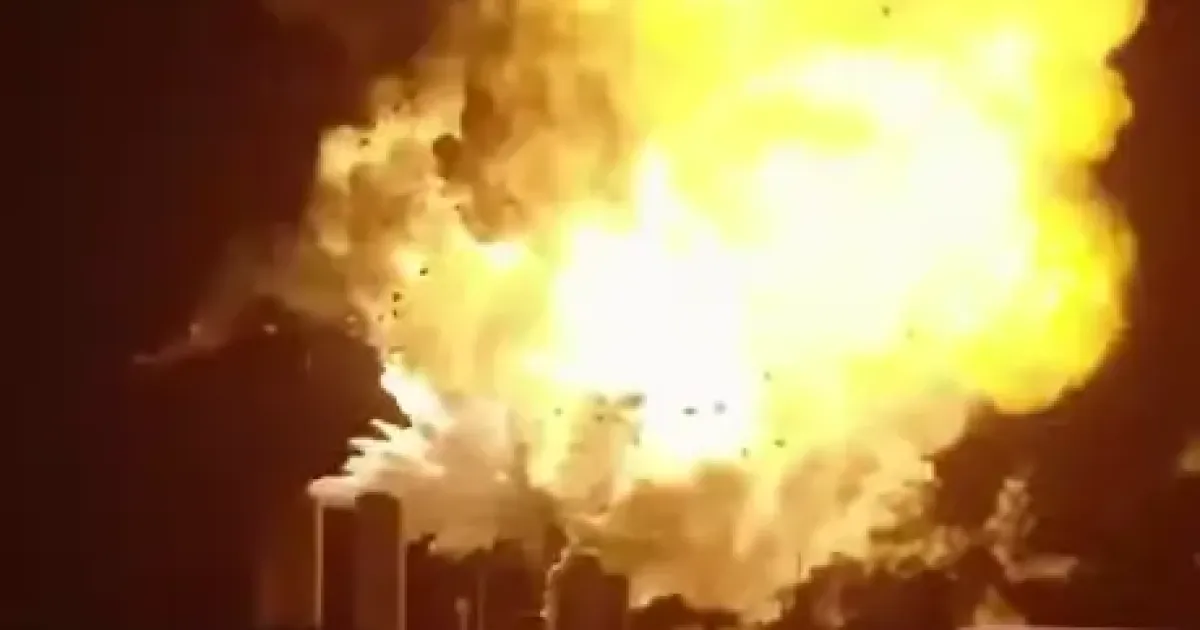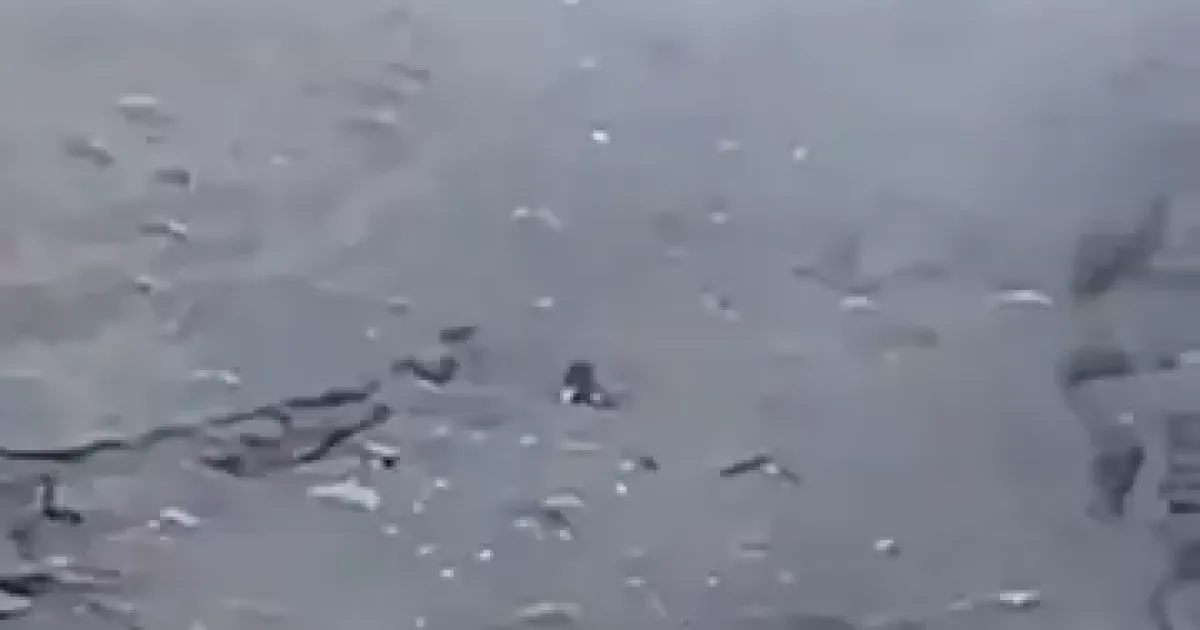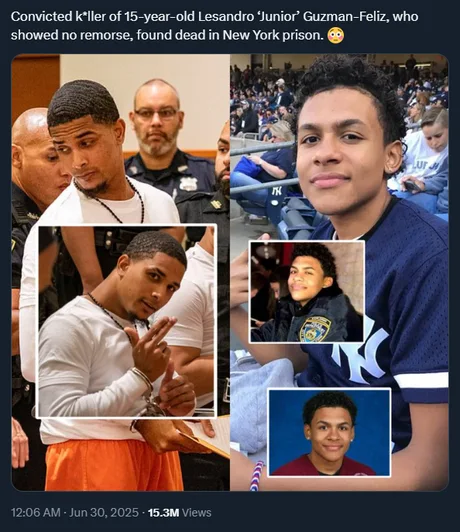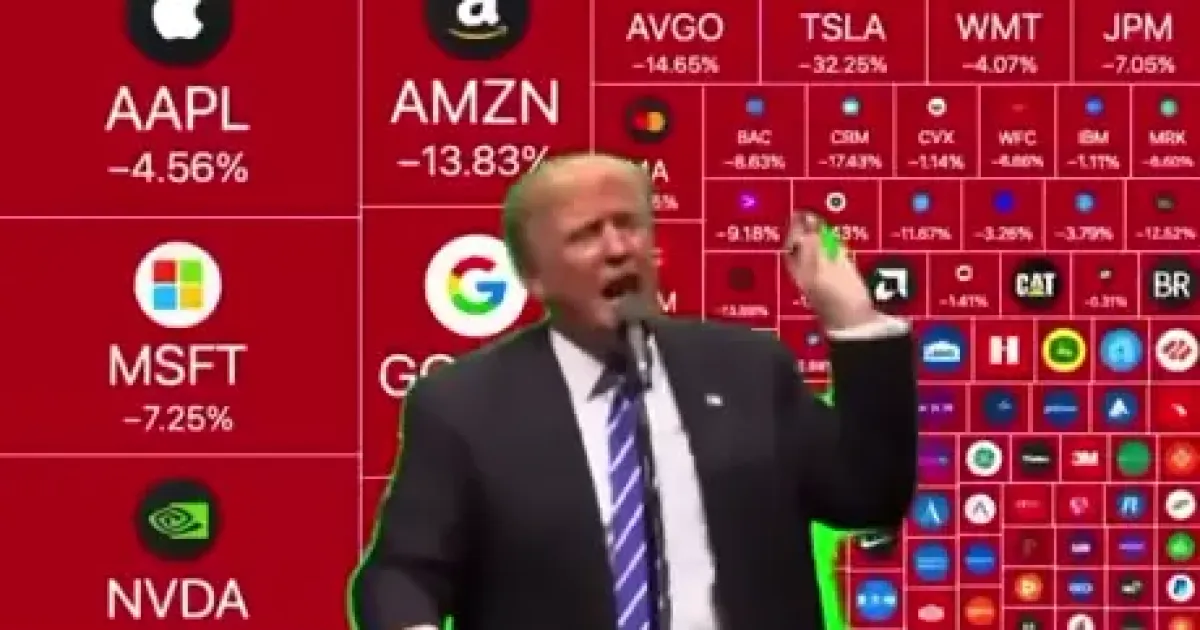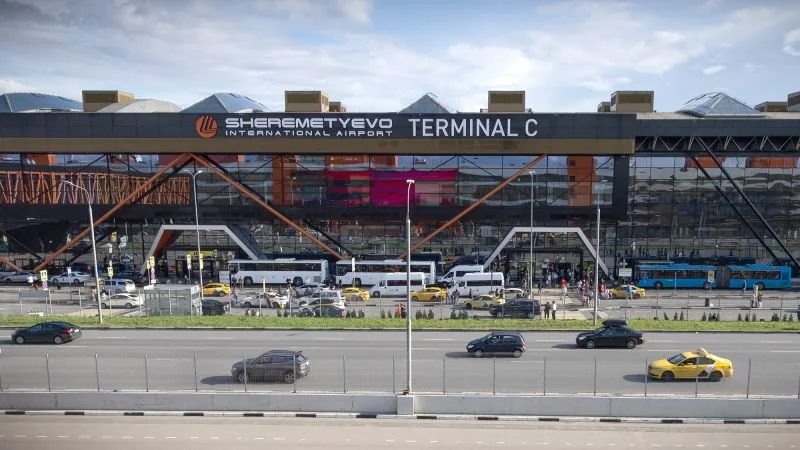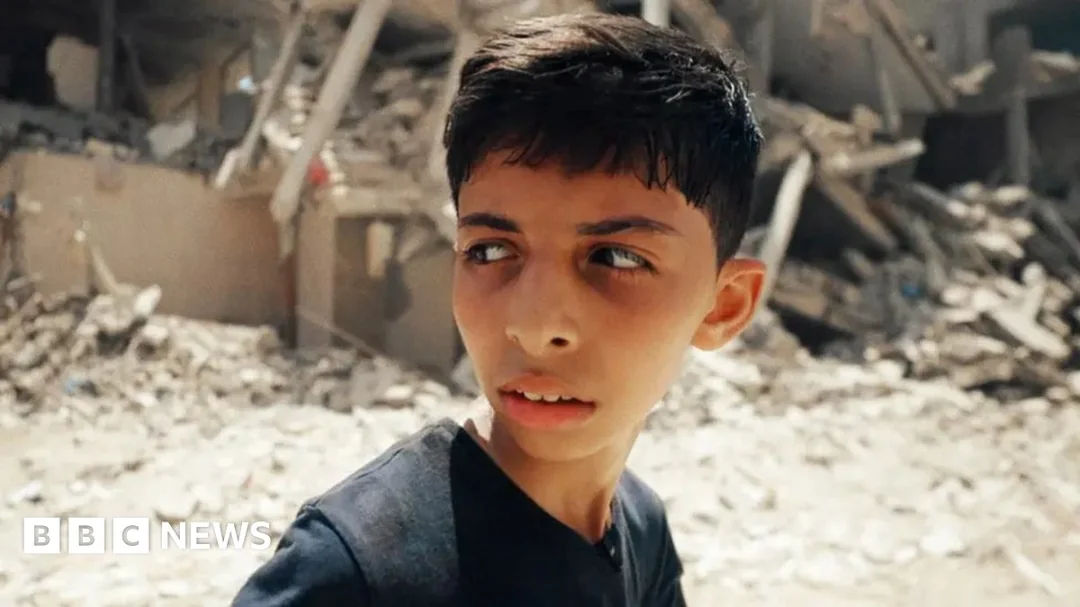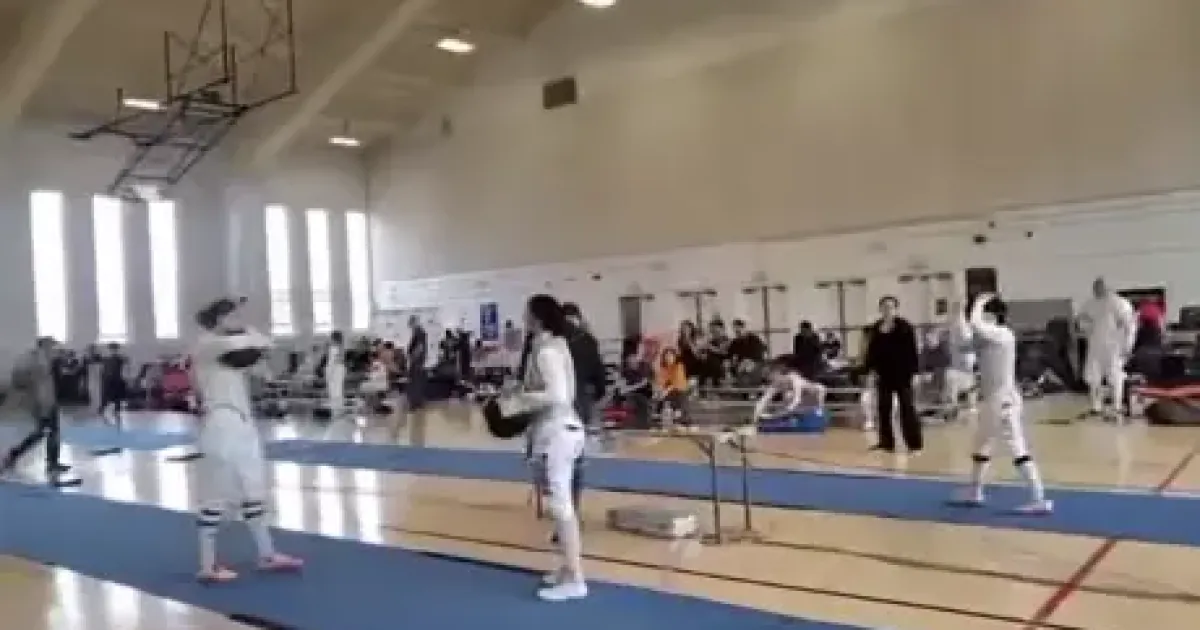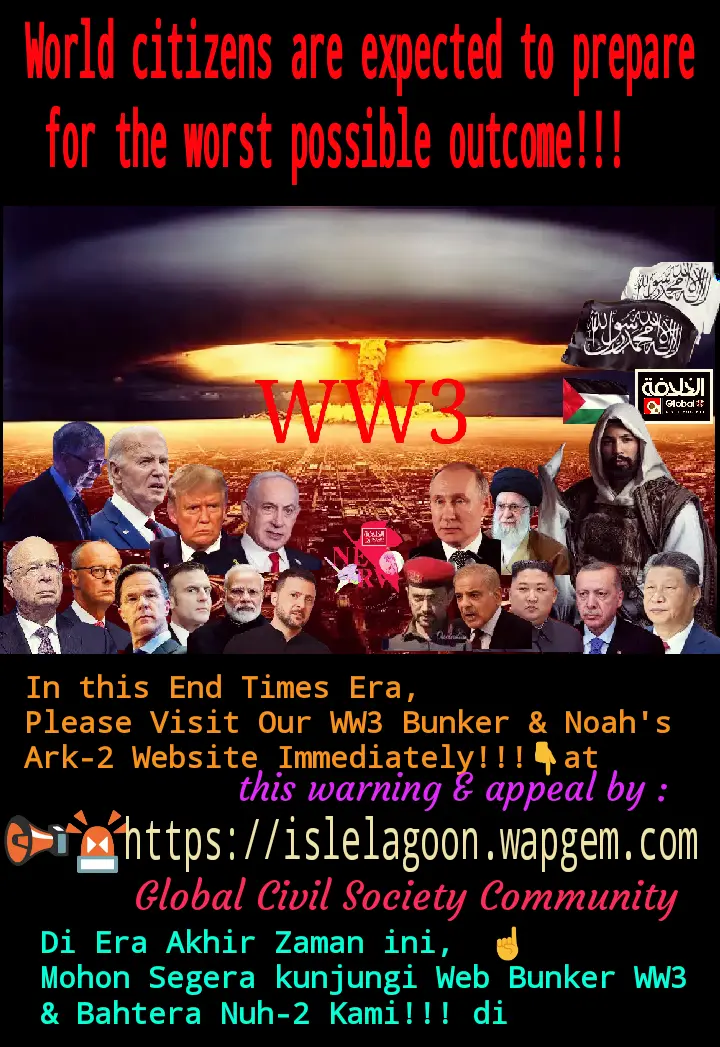
📢🚨🔥🔥WW3 is just around the corner!!!
📢🚨🔥🔥WW3 is just around the corner!!! Russia and China must take a stand, on the attack on 3 Iranian Nuclear Facilities. Russia & China must also do the same to Israel by destroying their nuclear reactor sites & blowing up their nuclear missile production warehouses!! 🚧🔥🔥🔥
#news #community #update #global #unite #revolution #palestine #GCSC #endtimes #prophecy #civilsociety #ww3 #GreatReset #bunker
Read More...
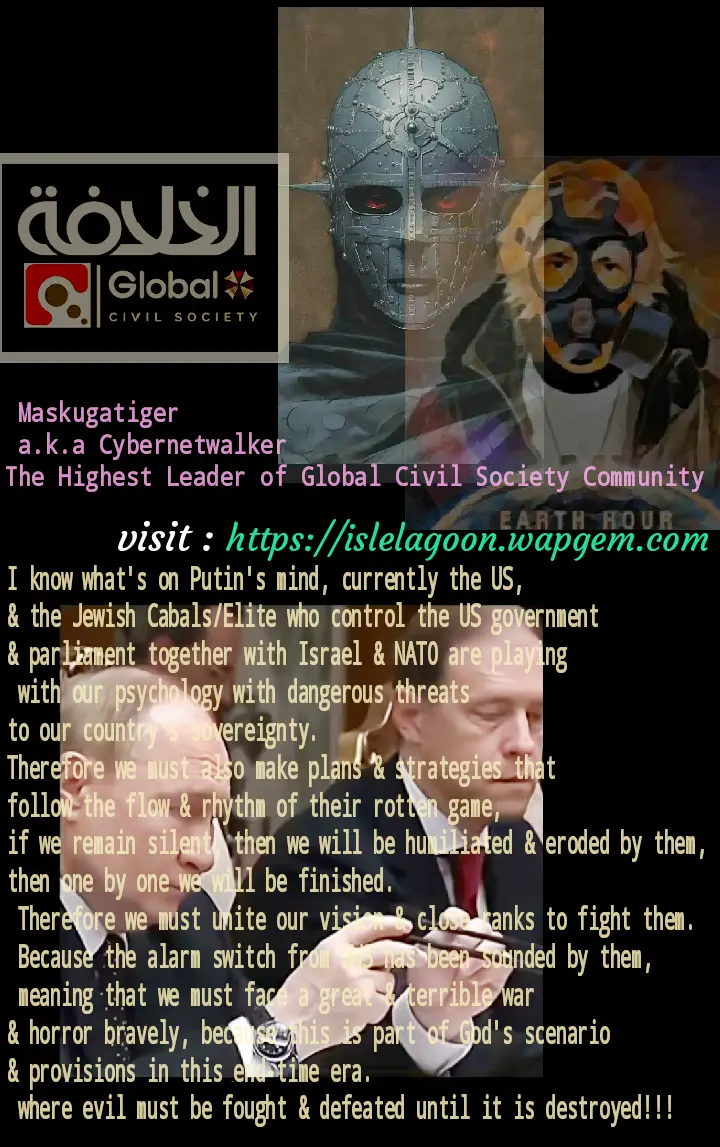
I know what's on Putin's mind 💡
I know what's on Putin's mind,currently the US, & the Jewish Cabals/Elite who control the US government & parliament together with Israel & NATO are playing with our psychology with dangerous threats to our country's sovereignty.
#RedAlert #WW3 its Coming
& Start,Are U Ready?!!
#news #community #update #global #unite #revolution #palestine #GCSC #endtimes #prophecy #civilsociety #ww3 #GreatReset #bunker
Read More...
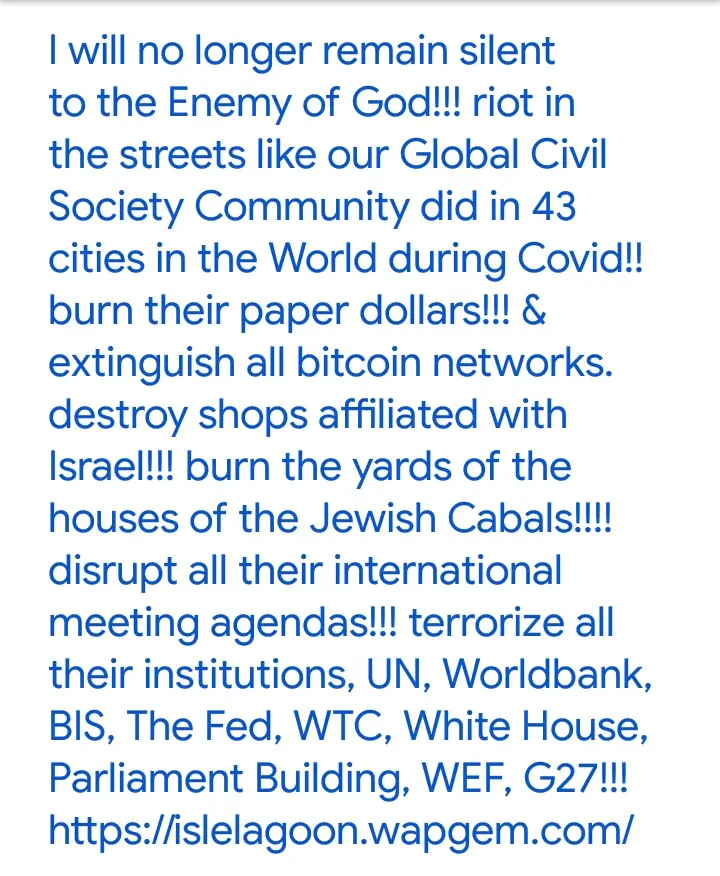
I will no longer keep silent to the Enemy of God!!! Part 2 🚨
It's time for all elements of the Global Civil Society Community to move!! guerrilla warfare to spread this information through various social media & plan our real action of resistance by taking to the streets!!!!!
#news #community #update #global #unite #revolution #palestine #GCSC #endtimes #prophecy #civilsociety #ww3 #GreatReset #bunker
Read More...
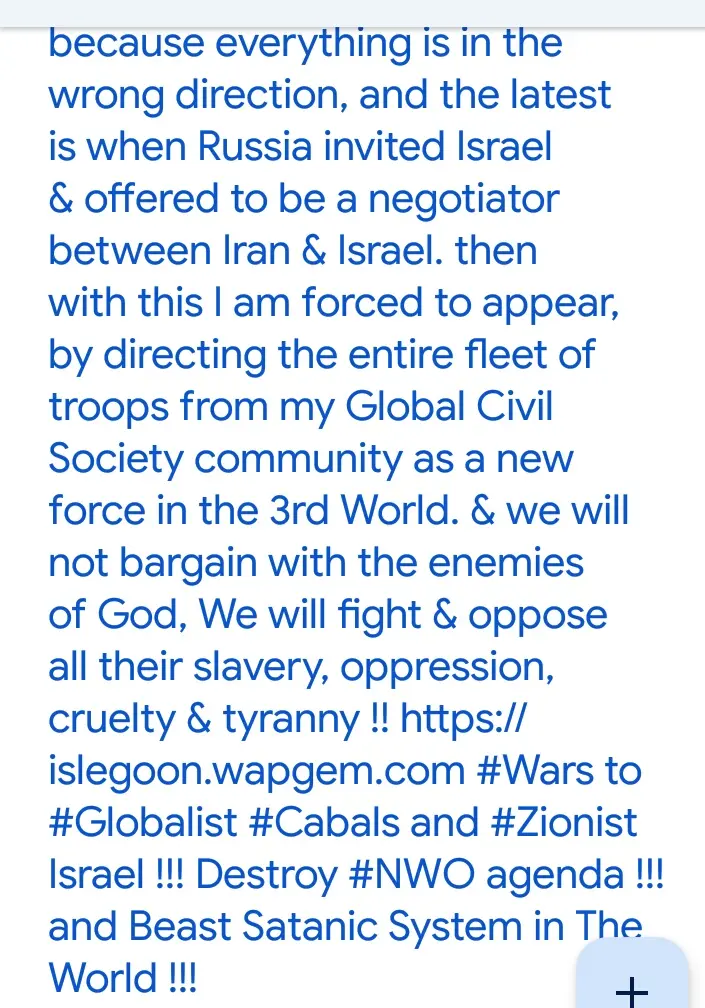
I will no longer keep silent to the Enemy of God!!! Part 1 🚨
It's time for all elements of the Global Civil Society Community to move!! guerrilla warfare to spread this information through various social media & plan our real action of resistance by taking to the streets!!!!!
#news #community #update #global #unite #revolution #palestine #GCSC #endtimes #prophecy #civilsociety #ww3 #GreatReset #bunker
Read More...
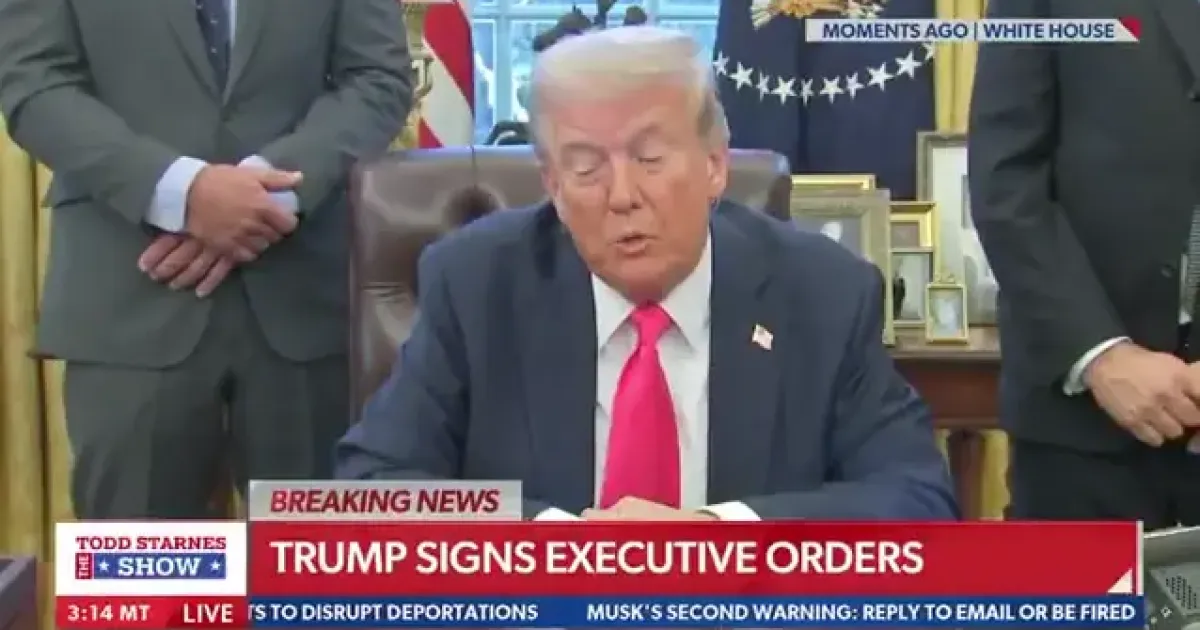
Trump: "We're gonna be selling a gold card. You have a green card, this is a gold card.
We're gonna put a price on that card of about $5 million and that's going to give you green card privileges, plus. It's gonna be a route to citizenship, and wealthy people will be coming into our country."
#Trump #GreenCard #GoldCard #News #EUA
Read More...
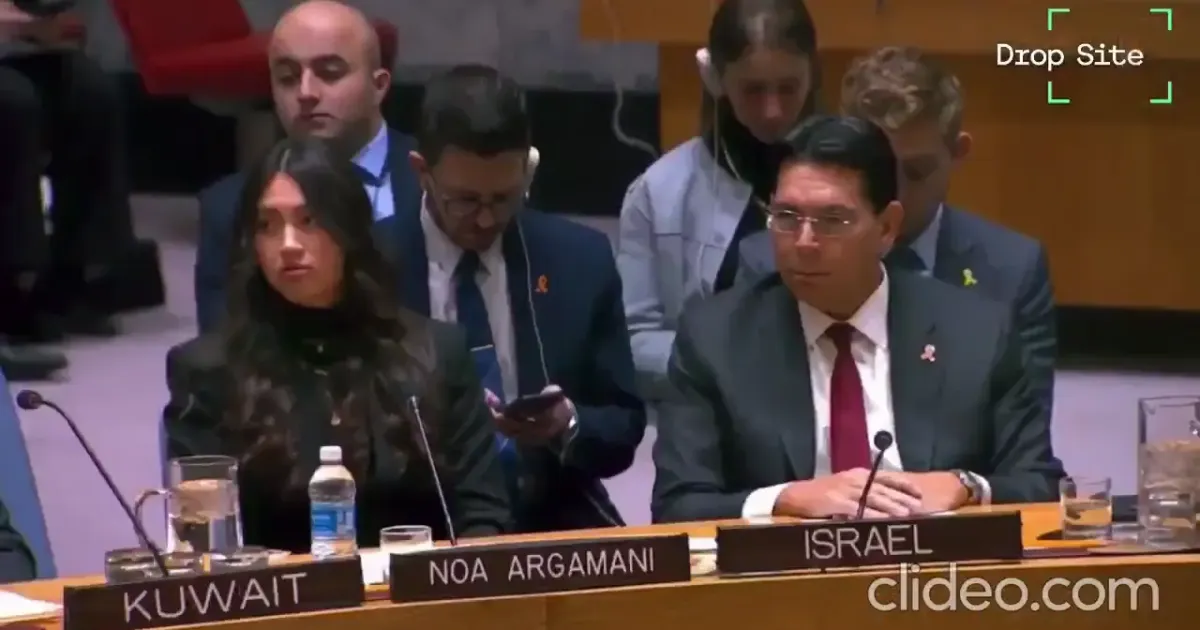
Dan Levy on the Conflict: "A Minute of Silence for Each Lost Child Would Last Over 300 Hours"
Former Israeli Peace negotiator Dan Levy: “A minute of silence for each of the Bibas children would be appropriate, as would a minute of silence for each of the more than 18,000 Palestinian children murdered in Israel's devastation of Gaza. That silence would extend to over 300 hours."
#News #Palestine #War #Gaza #Israel
Read More...
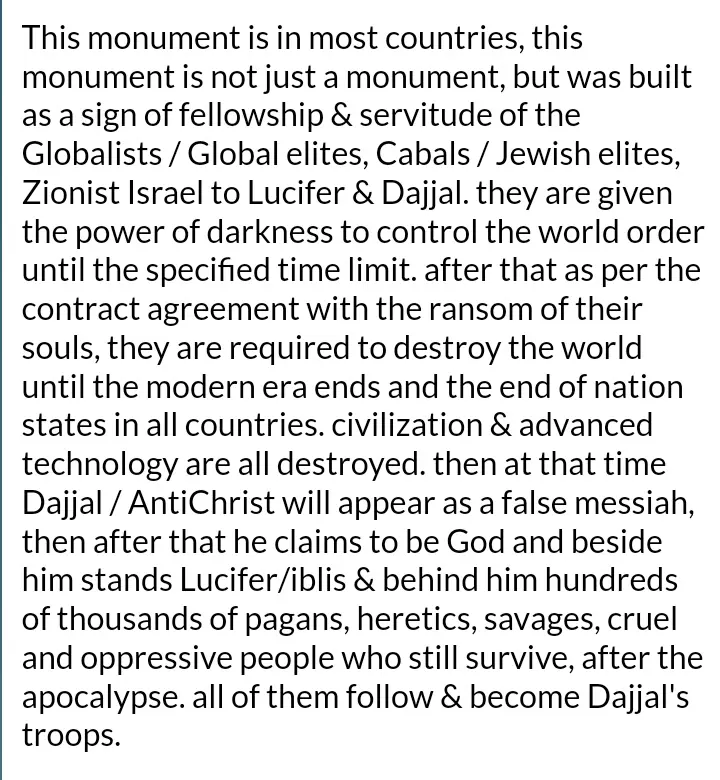
the reason they brought about Ww3 & the total destruction of the modern world order is because of this!!!
The reason those crazy people,the Devil/Lucifer & Dajjal/Antichrist worshippers,are carrying out the total destruction of modern civilization!
through WW3,Great Reset & Plandemic,is as a ransom for their agreement with Dajjal & the Devil,& to await the coming of the false Messiah!!
What i mean as monument, its obelisk monument in many countries!!!!
#news #community #update #global #unite #revolution #palestine #GCSC #endtimes #prophecy #civilsociety #ww3 #GreatReset #bunker
Read More...

a fatal mistake that will bring you disaster, if you underestimate the warning
You may be the luckiest person, out of millions of people in this world, if you find my post, and if you read it, listen & follow the information contained therein! 😇
#news #community #update #global #unite #revolution #palestine #GCSC #endtimes #prophecy #civilsociety #ww3 #GreatReset #bunker
Read More...
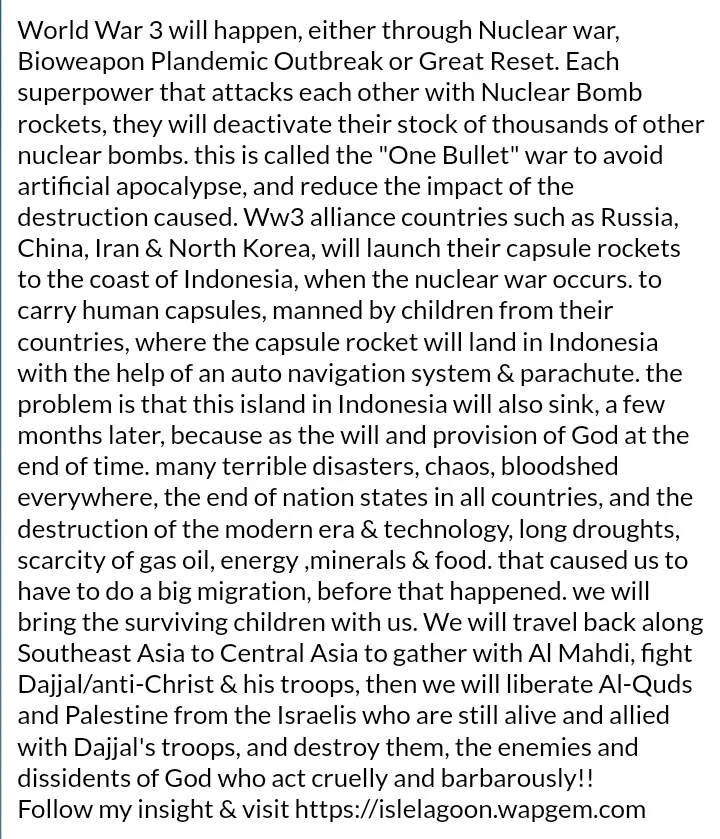
World War 3 will happen, either through Nuclear war, Bioweapon Plandemic or Great Reset.
World War 3 will happen, either through Nuclear war, Bioweapon Plandemic or Great Reset. Each superpower that attacks each other with Nuclear Bomb rockets, they will deactivate their stock of thousands of other nuclear bombs. This is called the "One Bullet" war to avoid artificial apocalypse.
#news #community #update #global #unite #revolution #palestine #GCSC #endtimes #prophecy #civilsociety #ww3 #GreatReset #bunker
Read More...
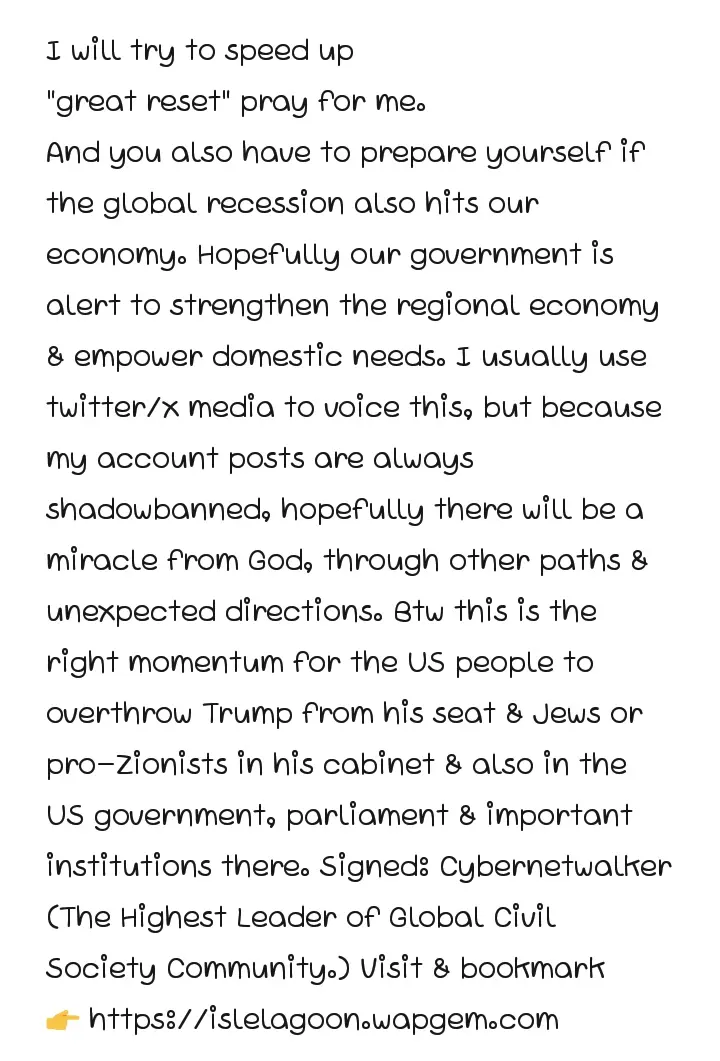
I will accelerate the "Great Reset"
I will accelerate the "Great Reset",
Pray for me..
and you must also prepare yourself to face the impact of the Global recession that will occur in your country, in this end-time era!!
take care of yourself & your family.
🙏🤲😇
#news #community #update #global #unite #revolution #palestine #GCSC #endtimes #prophecy #civilsociety #ww3 #GreatReset #bunker
Read More...
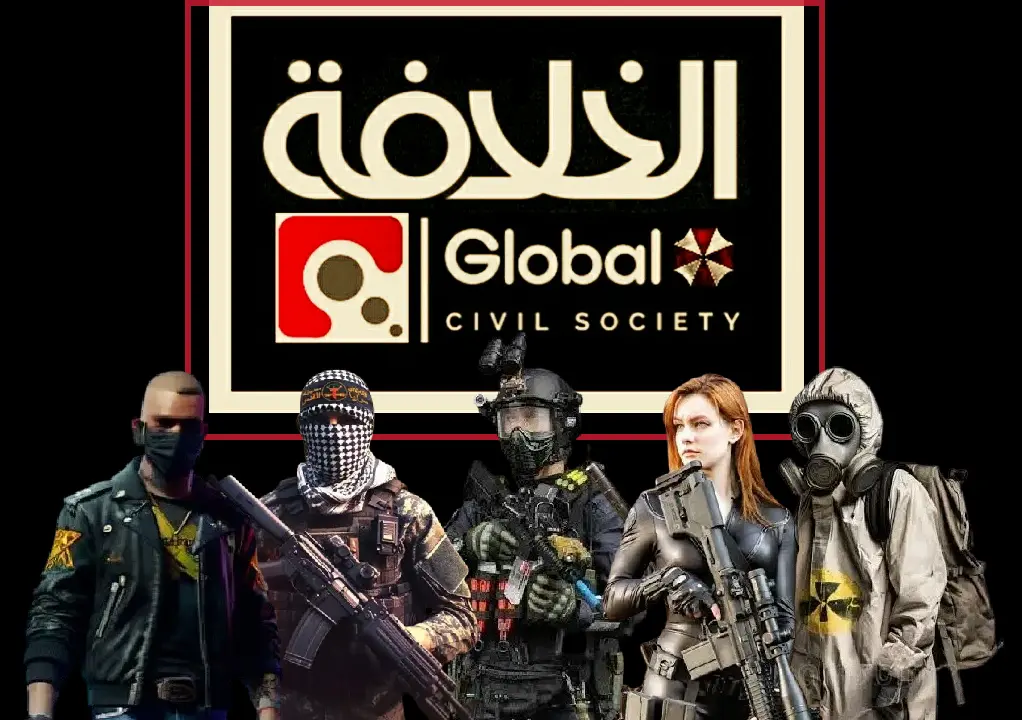
Global Civil Society Community.
Revolutionary Guard, Palestine Fighter, Rescue Unit, Survivalist & Hazmat Specialist
Welcome
to The Endtimes Era's !!!
#news #global #wars #update #endtimes #nwo #globalist #community #palestine
Read More...

Its Not Easy Build your Hub Network.
U must Build brothers hood & trust first there between each other, to be one vision,allience & mission. To fight All Tryranny,Heresy & Slavery. In the World.
I can assure you that communities including those on my social media that are fully affiliated and have joined my Global Civil Society community are truly social networks that uphold truth & human rights, freedom to speak & saying the truth!!!
Welcome
to The Endtimes Era's !!!
#news #global #wars #update #endtimes #nwo #globalist #community #palestine
Read More...
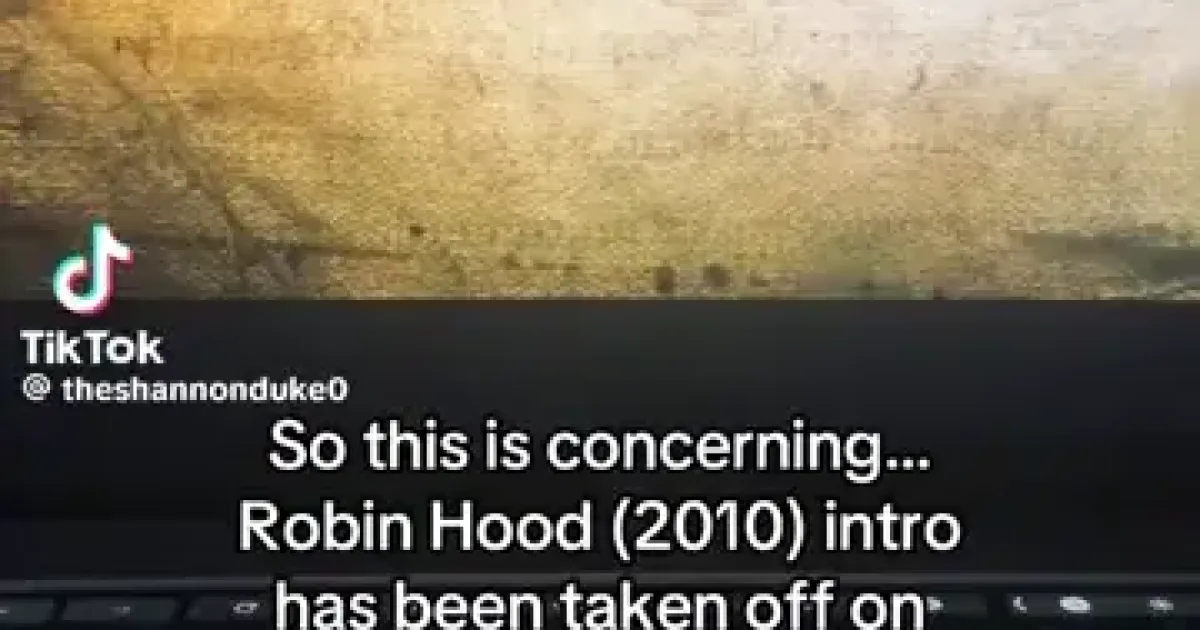
Why??
Amazon/Bezos removed the opening of Robin Hood (2010): “in times of tyranny and injustice when when law oppresses the people, the outlaw takes his place in history” #News Read More...

Putin offers Russian and Ukrainian rare minerals to US
Russian President Vladimir Putin said he is open to offering the US access to rare minerals, including from Russian-occupied Ukraine.
This comes after US President Donald Trump has repeatedly pushed for Ukraine to give up some of its minerals in exchange for support, in a deal which is currently being finalised, according to a Ukrainian minister.
#Russia #Ukrainian #Minerals #News
Read More...

Britain wants to get close to Trump. Will Elon Musk stand in the way?
#News #UK
It was not the start to 2025 that Keir Starmer wanted or expected: in the early hours of New Year’s Day, Elon Musk lobbed a series of angry posts and allegations towards the British prime minister, engulfing his government in a very public fight.
In the days since, the world’s richest man has dredged up a painful, years-long scandal over grooming gangs and pushed for the release of Tommy Robinson, an imprisoned far-right agitator with a swelling social media following.
The tech billionaire, who played a prominent role in US President-elect Donald Trump’s election campaign, has posted or reposted on X about child sex abuse cases in the UK more than 50 times this week.
He has called for Starmer and his safeguarding minister to be removed from power, for new elections to take place, and even for King Charles III to unilaterally dissolve parliament – something which hasn’t happened for nearly two centuries and would cause a constitutional crisis.
The topics represent the latest fascination of Musk, but his vexation is not new – as Trump’s inauguration nears, the X owner has intervened with increasing ferocity in European politics and hailed far-right figures on the continent. He has repeatedly condemned the European Union’s institutions and policy decisions, and Italy’s president has warned him to stop meddling in the country’s affairs.
Musk now poses a delicate new challenge for Britain’s political leaders. Starmer is taking great pains to charm Trump, while also hoping to hold back at home the growing influence of Reform UK, a populist, anti-immigration party that Musk has endorsed.
And the row may already have burnt Nigel Farage, the Reform leader who had been openly working to secure Musk’s financial backing – but whom Musk turned against on Sunday, after Farage failed to endorse his stance on Robinson.
Can Musk be ignored?
Musk’s tussles with Starmer’s Labour government did not begin this week.
He had previously called Britain a “police state” over its crackdown on far-right rioters, who sparked violent clashes on the country’s streets during the summer. He has long derided Starmer on his platform, and more recently hailed Reform UK, which since its founding in 2018 has capitalized on public frustration with the country’s two major parties and now rivals each of them in opinion polling.
He has prodded other European politicians too; in the past week the German government has accused Musk of attempting to influence the country’s February election, through his support for the far-right Alternative for Germany (AfD) party. The group been accused of resurrecting Nazi-era ideology and slogans, and its youth arm has been designated by German authorities as an extremist organization.
Now, Musk’s growing infatuation with Tommy Robinson has positioned the billionaire as an idol for Britain’s online far-right community. Robinson, whose real name is Stephen Yaxley-Lennon, was jailed for 18 months in October after he admitted to being in contempt of court by repeating false accusations about a Syrian refugee.
For most in Westminster, Musk’s anger – like much online trolling – remains little more than a sideshow.
One Labour MP told CNN they were “looking forward to the great Musk vs Trump estrangement.” The lawmaker added that, while using Musk’s platform, they have “noted the usual post-New Year energy from the right wing who are frustrated. It’s unseemly but that’s populism for you.” A handful of lawmakers have discussed whether they would stop using X over concerns about content moderation.
But privately, some Labour MPs are asking themselves an obvious question: why us? Unlike in Germany, there is no impending parliamentary election through which Musk can exert his influence. An election is not due to be held in Britain for more than four years, and Labour’s government is relatively unpopular but, in parliamentary terms at least, rock solid.
And for Starmer, Musk can’t be entirely ignored. The prime minister has so far resisted taking Musk’s bait – the billionaire has accused him of failing to act against grooming gangs while director of public prosecutions – but MPs will eventually want to see him take a stronger stand, to protect his ministers from torrents of online abuse. (Musk has repeatedly this week called for Starmer’s safeguarding minister, Jess Phillips, to be imprisoned – on Saturday calling her “pure evil” and “a wicked creature” – for prioritizing a local inquiry in Oldham over a national inquiry, a policy approach which is not a crime.)
“Musk and others must not be given oxygen in their attempts to undermine (the) government, elected by the British people — it is for them alone to critique,” another Labour MP told CNN. “It is clear that (his) increasing interest in UK politics must be recognised, not least (given) how social media is being used to manipulate the electorate,” they added.
At the same time, the United States is Britain’s closest and most important ally – and Musk seems to be, for now at least, the closest and most important ally of its incoming leader.
Labour is desperate to build trust with the Trump administration; the government being shunned by the president-elect would only work in Farage’s favor, and there is huge economic incentive in working with Trump on, for instance, exemptions from his tariff regime.
The comments of Starmer’s ministers reflect that dilemma. In a tip-toeing remark, health secretary Wes Streeting told reporters on Friday: “Some of the criticisms that Elon Musk has made I think are misjudged and certainly misinformed, but we’re willing to work with Elon Musk, who I think has got a big role to play with his social media platform to help us and other countries to tackle this serious issue.”
A delicate dance for Britain’s right
It remains unclear how much influence Musk will have on Trump’s decision-making – particularly on foreign policy, which is firmly outside his official remit as a co-head of the new Department of Government Efficiency.
But his remarks are already having some impact in Britain – exposing the fault lines in a deeply divided and unusually malleable political landscape.
Kemi Badenoch, the leader of the opposition Conservative Party, reactively called on X for a “long overdue… full national inquiry into the rape gangs scandal.”
But her authority on the issue, as with so many others, is limited by her own involvement in an ousted but deeply disliked Conservative government. That government had, indeed, commissioned a years-long inquiry into child sexual abuse, which concluded in 2022. But the probe’s leader subsequently criticized the former government’s response to her findings, which included a key recommendation that reporting of child sex abuse should be mandatory.
The long hangover of the Conservative era has allowed Farage to position his movement, with some success, as the “real” opposition in Britain, and Musk’s growing interest in Reform represents an opportunity for Farage to further his standing.
The populist leader predictably condemned Badenoch’s comments and has attached himself to most of Musk’s remarks. He talks openly about hoping for financial backing from Musk, ahead of a round of local elections in May in which Reform is on pace to perform well.
“He will help us enormously because he’s a hero figure, especially for the youth who really do admire this man,” Farage said of Musk on the GB News channel on Friday. “He’s helping us because he has given us an understanding of how we did it in America. And that’s very useful to us.”
But there were dangers for Britain’s populist rabble-rouser, too. Echoing Musk’s support for Robinson was a bridge too far for Farage, who told GB News: “(Musk) sees Robinson as one of these people that fought against the grooming gangs. But of course the truth is Tommy Robinson’s in prison not for that, but for contempt of court.”
“We’re a political party aiming to win the next general election. He’s not what we need,” Farage said of Robinson.
And soon after, Musk appeared to have turned his back on the leader. “The Reform Party needs a new leader. Farage doesn’t have what it takes,” Musk posted on Sunday.
“Well, this is a surprise! Elon is a remarkable individual but on this I am afraid I disagree,” Farage responded. “My view remains that Tommy Robinson is not right for Reform and I never sell out my principles.”
For leading politicians across Britain’s ideological divide, Musk brings a heady mix of opportunity and risk.
His tendency to fawn over far-right figures won’t find much popular support in a country that, unlike some European nations, has not seen the emergence of a serious, extreme right-wing political movement – a fact Farage will remember even if he continues to push for the US magnate’s financial backing.
But in government, outwardly shunning Musk is not yet an option. The delicate nature of Starmer’s relationship with Trump may depend on keeping the billionaire at arm’s length – for as long as that remains possible.
#ElonMusk #US
Read More...
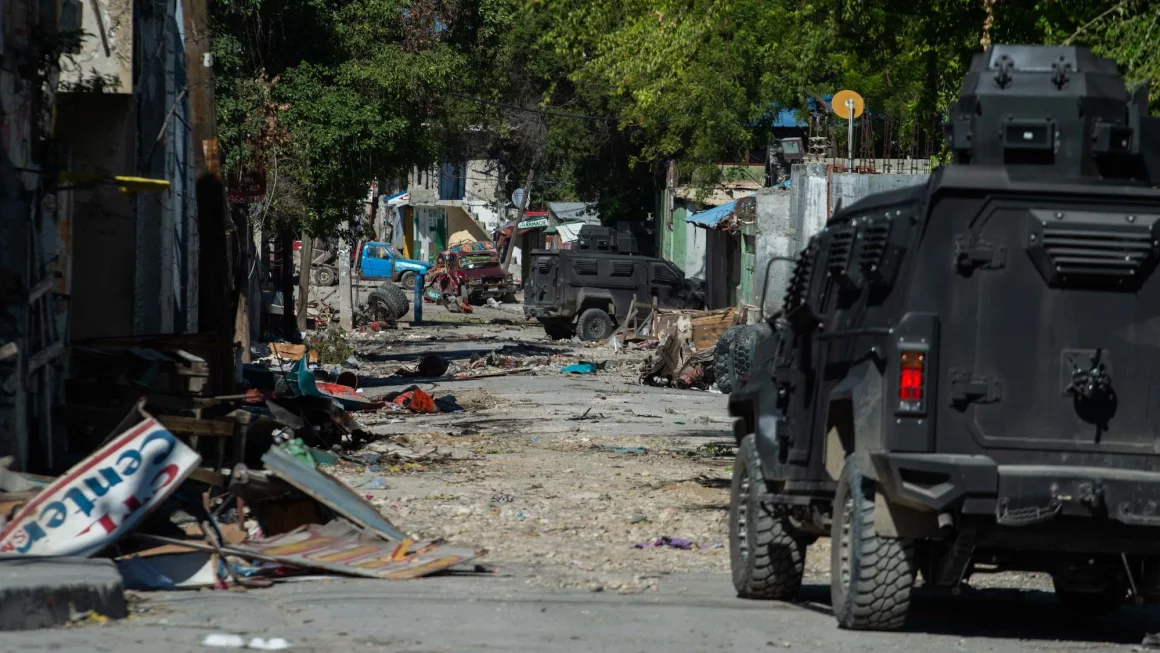
Guatemalan and Salvadorian forces arrive in Haiti to join fight against violent gangs
#News #Haiti #Guatemala #ElSalvador
A group of security forces from Guatemala and El Salvador arrived in Haiti on Friday to reinforce a multinational mission tasked with tackling the country’s rampant gang violence, the Haitian National Police announced.
The 75 Guatemalan and eight Salvadoran troops were greeted on the tarmac of the international airport in the capital, Port-au-Prince, by a host of high-ranking officials, video released by the police shows.
The officials included the leader of Haiti’s Transitional Presidential Council Leslie Voltaire, Prime Minister Alix Didier Fils-Aimé, and the United States Ambassador to Haiti Dennis Hankins.
The troops will join the foreign police force known as the Multinational Security Support (MSS) mission — a US and United Nations-backed initiative working with the Haitian police to restore security on the island amid an ongoing battle with the violent gangs.
In a statement, Normil Rameau, the acting director general of the National Police, said a “marriage” of the police with the people of Haiti remains “the most effective way to facilitate the total restoration of security and the establishment of lasting peace.”
Haiti has been ravaged by intensifying gang violence, which the government has struggled to contain in the aftermath of President Jovenel Moïse’s assassination in 2021. The island nation has also grappled with natural disasters and a worsening hunger crisis.
The UN Security Council approved the launch of the MSS in 2023 after repeated pleas for international support from Haiti’s government. The mission received the support of the United States, which offered to provide hundreds of millions of dollars in funding and resources.
However, the mission has not been without trouble. It is helmed by hundreds of Kenyan police officers, but their deployment was repeatedly delayed before eventually arriving in June last year. The officers then did not receive pay for months after their arrival.
Violence has continued to plague the country despite the mission’s presence. In November, the US civil aviation regulator grounded all flights to Haiti for weeks, after three jets from US-based airlines were struck by bullets while flying over Port-au-Prince. In a separate incident in October, gangs targeted US Embassy vehicles with gunfire, later prompting the evacuation of 20 embassy staffers.
Godfrey Otunge, the commander of the Kenyan troops in the MSS, welcomed the Guatemalan and Salvadorian soldiers on Friday while praising their partnership with the Haitian government.
“We don’t take it for granted. We have a prime minister who is also our friend,” Otunge said, according to the police video.
Read More...
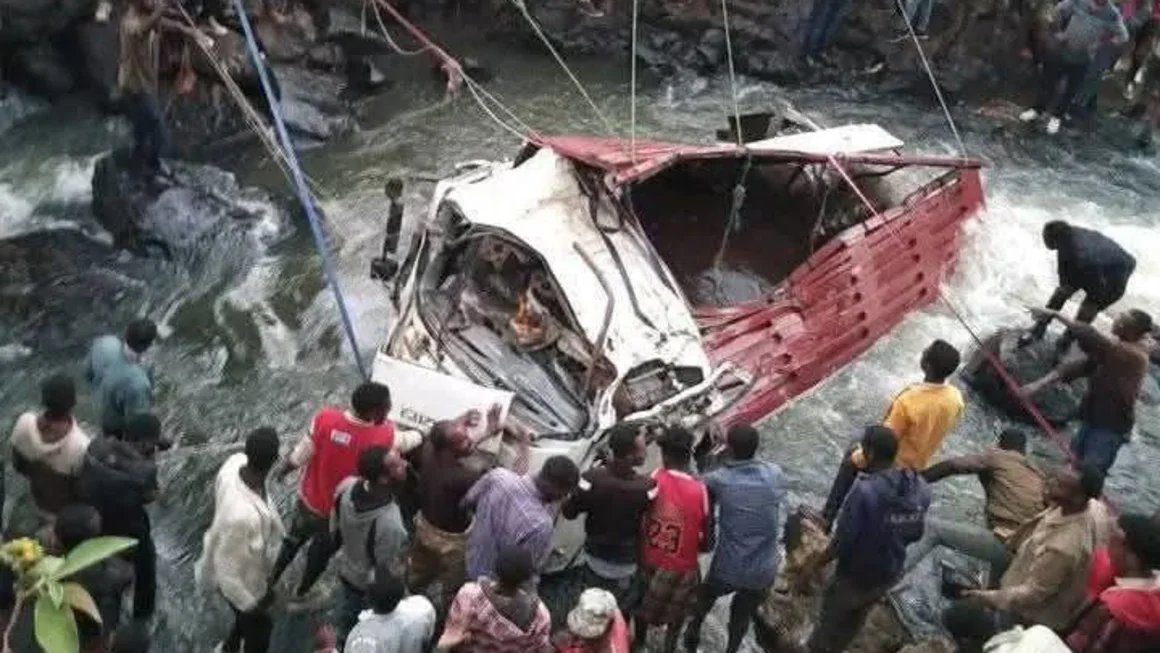
At least 71 people killed in Ethiopia road accident, officials say
At least 71 people have died in Ethiopia after a truck packed with passengers plunged into a river, according to the spokesperson for the southern Sidama regional government and a statement.
The accident occurred in the Bona district, the regional communication bureau said in a statement issued late on Sunday.
Wosenyeleh Simion, spokesperson for the Sidama regional government, told Reuters on Monday at least 71 people had died, including 68 males and three females.
“Five are in a critical condition and taking treatment at Bona General Hospital,” he said.
He added that the truck had missed a bridge and fell into a river and that the road had many bends.
Some of the passengers were returning from a wedding ceremony and some families had lost multiple members, he said, adding traffic police in the region had reported the truck was overloaded, which likely caused the accident.
The state-run Ethiopian Broadcasting Corporation also reported that the passengers were traveling to a wedding when the accident occurred on Sunday.
In a statement late on Sunday, the regional communication bureau had given the death toll as 60.
Deadly traffic accidents are common in Ethiopia, where driving standards are poor and many vehicles are badly maintained.
At least 38 people, mostly students, were killed in 2018 when a bus plunged into a ravine in Ethiopia’s mountainous north.
#News #Ethiopia
Read More...

Dominican Republic deported more than 276,000 Haitians in 2024
#News
The Dominican Republic deported more than 276,000 Haitians in 2024, the country’s Immigration Directorate said Wednesday.
In the last three months of the year alone, over 94,000 people were deported under a new operation aiming to remove up to 10,000 undocumented Haitians per week, ordered by the Dominican Republic’s National Security and Defense Council headed by President Luis Abinader.
Dominican authorities also deported 48,344 Haitians during the January-March quarter, 62,446 between April-June, and 71,414 from July to September, according to the statement.
Government spokesman Homero Figueroa told reporters in October that the government ramped up deportations to address an “excess” of Haitian migrants in the Dominican Republic, which shares an island with Haiti. The two countries have long seen an informal flow of people across their shared border.
Haiti’s then-Foreign Minister Dominique Dupuy condemned “brutal scenes of raids and deportations,” and demanded justice for “dehumanizing acts” against her compatriots. Dominican authorities maintain that the deportations are carried out in compliance with human rights.
In October, Reuters footage captured dozens of migrants crammed into caged Dominican Republic law enforcement trucks heading to Haiti. Aid organizations have rushed assistance to the Haitian side of the border to assist the thousands of deportees.
The mass deportations come amid a worsening political and social crisis in Haiti; gangs are estimated to control more than 80% of the country’s capital, Port-au-Prince.
Read More...

